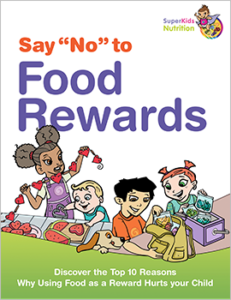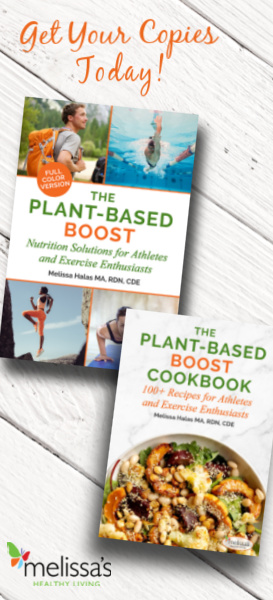
See what some of the top nutrition experts had to say about nut trends, introducing peanuts to infants, and more!
Nuts keep growing in popularity – we hear about them everywhere! From nut bars, to nut milks to new nut research related to heart health (1), gut bacteria (2), and male fertility (3)! We talked to some nut’trition experts to help you navigate the nut craze. Check out their tips below:
On Nut Trends
LeeAnn Smith Weintraub, MPH, RD, who is always on the top of cutting edge food and nutrition trends attributes the growing popularity of nuts to “consumers becoming increasingly comfortable [with] eating fats, especially plant-based fats, which is fueling the nut craze.”
Weintraub reports noticing a wide variety of nut milks (peanut, macadamia, cashew, almond, etc.) becoming household staples, and an explosion of nuts in the snack isle!
Some popular snacks include:
- Bars made with nuts and nut butters
- Nut clusters
- Cocoa dusted nuts
- Energy balls that contains both seeds and nuts
- Trail mixes
If you have a hard time choosing snacks or want to know which ones might be the better choices, check out Kira’s label reading basics!
On Introducing Peanuts to Infants
Patricia Bannan, MS RDN, healthy cooking expert, author of Eat Right, When Time is Tight and mother shares her personal experience:
“As a new mom, I introduced peanut butter to my daughter at about 6 months due the most recent expert thinking that introducing a potential food allergen early on is better. Since peanut butter is pretty sticky for an infant, a pediatric Occupational Therapist recommended an all-natural peanut butter snack puff. My daughter was a bit slower than average when it came to her comfort level swallowing solids, so the puffs were a great starter snack because they dissolve easily in the mouth, plus they introduced peanuts into her diet. Now that she’s 14 months, we often give her organic peanut butter with banana and she loves it. I’m happy to say, at 14 months she has no known food allergies.”
Here are Banan’s Recommendations:
- Introduce peanut butter to your infant at about 6 months
- Have your infant try peanut butter and banana at about 14 months
On Nut Allergy and Nut Alternative
Vandana Sheth, RDN, CDE specializes in food allergies, and explains her take on sunflower seed butter (aka sun butter):
“It is typically used as a substitute for peanut or tree nut butter in sandwiches and on crackers for a snack. Sun butter is now available as a convenient single serving pack for kids to take to school or when traveling!”
Here are Sheth’s recommendations:
- Add sun butter to smoothies or oatmeal for an added boost of protein and heart healthy fats
- Use it for baking or when making sweet treats in place of another nut butters
On Environmental Impact of Nuts/Nut Butters
Sharon Palmer, RDN, the Plant-Powered Dietitian and author of The Plant-powered Diet points out “it’s true that nuts overall have a higher water footprint, and they also have other eco-impacts related to their production, such as fertilizer application, transportation, and processing. Peanuts (not a true nut) have the lowest environmental footprint, while tree nuts have higher environmental footprints. However, it’s important to note that the serving size of nuts is very small—1 oz, unlike other foods that are closer to 4 oz per serving. Nuts are very concentrated foods, so it’s important to consider that benefit.”
Palmer elaborated on this to explain what the research shows:
“Multiple studies have shown that plant-based diets, such as vegetarian diets, that have regular intake of nut consumption, have significantly lower carbon footprints. So, when you consume nuts within the context of a healthy plant-based diet, you have a much lower carbon footprint than a typical Western style diet.”
Here are Palmer’s Recommendations:
- One serving of nuts per day (1oz)
- Choose from a variety of nuts and peanuts: almonds, pistachios, peanuts, walnuts, pine nuts, pecans, hazelnuts, and cashews. They each have different nutrition profiles, benefits, and flavor profiles!
On Weight Management and Nut Butter
Ruth Frechman, MA, RDN, CPT, author of The Food is My Friend Diet and owner of On the Weigh gave us some input on how nuts come into play with weight loss.
“Some people are afraid to eat nuts and nut butters, because they think that it will make them gain weight. Generally speaking, it’s not what you eat, it’s how much you eat. The peanut butter in a sandwich is a good source of protein, vitamins, minerals, phytonutrients, as well as a healthy source of fat. Eating a jar of peanut butter while watching television after dinner would not be a conducive for weight loss. Healthy, yes. But too many calories.”
Here are Frechman’s recommendations:
- Include nuts and nut butters when trying to lose or maintain weight. They key is to watch the portion size for meals and snacks.
- ½ oz of nuts is equal to 1 oz from the protein foods group
- 1 oz of nuts equals ¼ cup or a small handful
- 1 Tbsp. of a nut butter is equal to 1oz from the protein foods group (Keep in mind, an individual on a weight loss program may only need 5 ounces of protein a day)
- Eat and enjoy nuts and nut butters. They may reduce the risk of heart disease. There is an FDA “qualified” health claim stating that eating 1.5 oz (1/3 cup) of nuts (almonds, hazelnuts, peanuts, pecans, pistachios and walnuts) per day may reduce the risk of heart disease.
- Store them in the refrigerator or freezer to keep them fresh since nuts contain oil and can go rancid.












